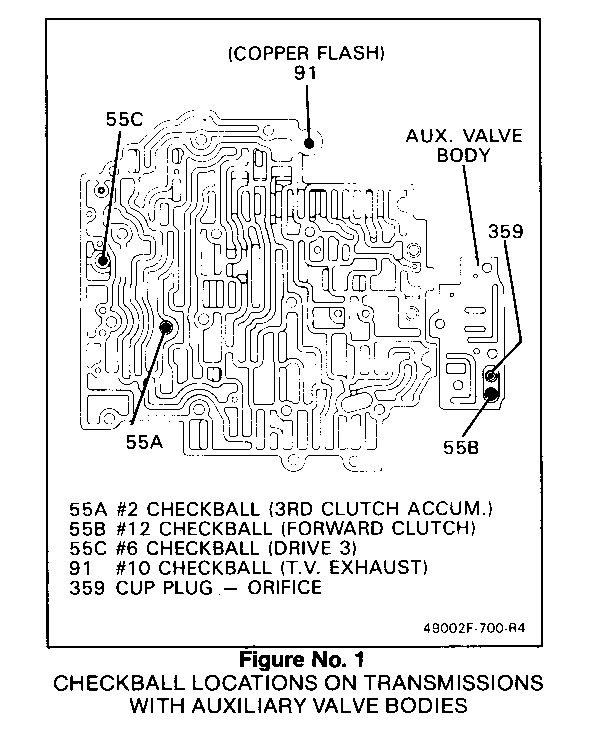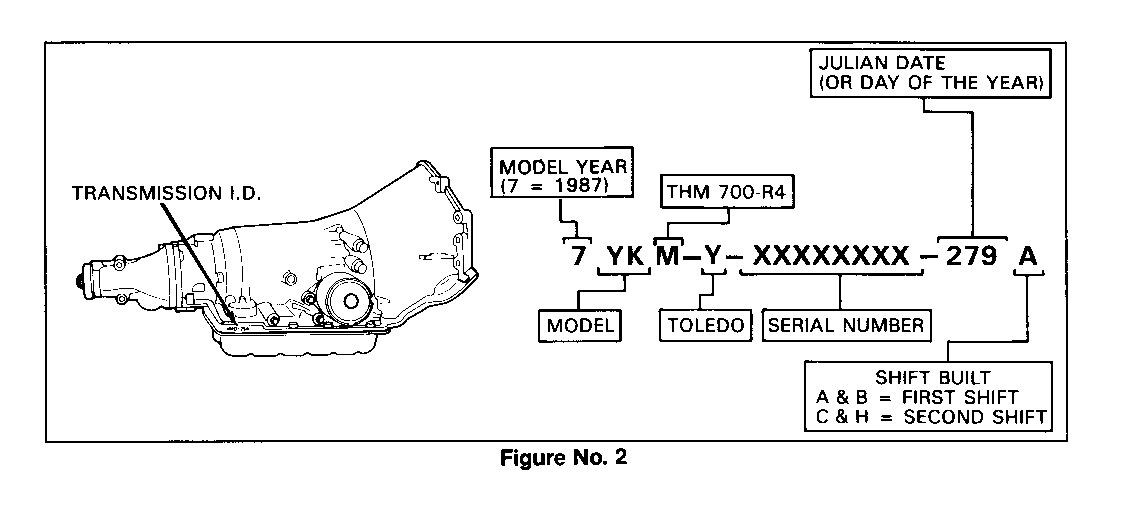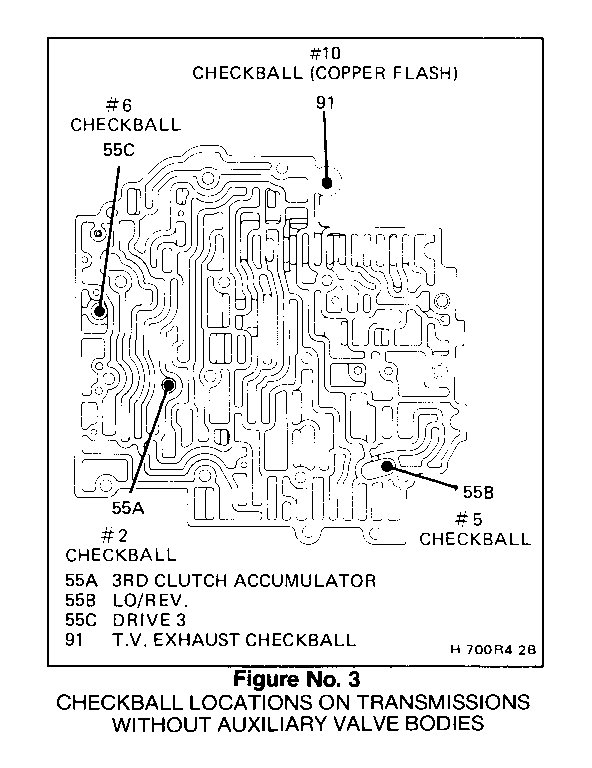DELAYED, HARSH ENGAGEMENT SLIP ON ACCELERATION

MODELS: ALL 1987 LIGHT DUTY MODELS AND 1988 CIK MODELS WITH THM 700-R4 AUTOMATIC TRANSMISSIONS
BULLETIN COVERS:
Service information on the correct location of the forward clutch checkball (#12-Figure No. 1) and the possible effects of installing the check-ball in the wrong location.
DATE OF PRODUCTION CHANGE:
By October 6, 1986 (Julian Date 279) (Figure No. 2) all 1987 THM 700-R4 transmissions were produced with an auxiliary valve body for an improved drive engagement shift feel. As part of this change, the lo and reverse #5 checkball located in the valve body assembly (Figure No. 3) was eliminated, and a new forward clutch checkball (#12-Figure No. 1) was added to the Auxiliary Valve Body. All 1987 Service Replace- ment Transmission Assembly (SRTA) units have this change.
NOTICE:
1987 Service Manuals refer to the forward clutch checkball (#55B) in the auxiliary valve body as #5. To avoid confusion with the lo and reverse #5 cheekball in a THM 700-R4 transmission produced without an auxiliary valve body (#55B-Figure No. 3), the forward clutch checkball has been changed to #12 (#55B-Figure No.1).
SERVICE ACTION:
When servicing any 1982 through 1987 THM 700-R4 transmission without an auxiliary valve body (Figure No. 3), the lo and reverse #5 checkball (#55B) must be located in the control valve body.
When servicing any 1987 THM 700-R4 trans- mission produced after October 6, 1986 (Julian Date 279) the forward clutch #12 checkball must be located in the auxiliary valve body (#55B- Figure No. 1). Do not install a checkball in the control valve body.
NOTICE:
If the forward clutch #12 checkball is installed in either the valve body or over the orificed cup plug (359-Figure No. 1) in the auxiliary valve body, the following condifions can occur:
o Delayed N-D, P-D or R-D o Harsh N-D, P-D Shifts o Slipping on Hard Accelerations o Forward Clutch Distress o No Upshift o 1-2 Tie-Up/Lo-Rev Clutch Distress and 2-4 Band Distress



General Motors bulletins are intended for use by professional technicians, not a "do-it-yourselfer". They are written to inform those technicians of conditions that may occur on some vehicles, or to provide information that could assist in the proper service of a vehicle. Properly trained technicians have the equipment, tools, safety instructions and know-how to do a job properly and safely. If a condition is described, do not assume that the bulletin applies to your vehicle, or that your vehicle will have that condition. See a General Motors dealer servicing your brand of General Motors vehicle for information on whether your vehicle may benefit from the information.
